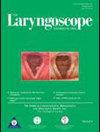Safety of Small-Diameter Endotracheal Tubes in Microlaryngeal Surgery
Abstract
Objectives
Microlaryngeal surgeries require unique considerations for airway management to facilitate patient safety and adequate surgical exposure. Small-diameter endotracheal tubes (ETTs) are widely used but have raised concerns regarding patient safety, including questions about the potential for barotrauma, effective ventilation, and adequate oxygenation. We hypothesize that small ETTs will prove to be safe in a variety of cases.
Methods
We conducted a case series analyzing the safety of 5.0 ETTs in microlaryngeal surgeries at Washington University School of Medicine from November 2020 to November 2023. Outcome measures included intraoperative desaturations (SpO2 < 90% for >2 min), high peak inspiratory pressures (PIPs) (>40 cm H2O), and prolonged extubation times (>15 min). Univariate regression models were used to analyze associations of sociodemographic and clinical variables with these outcome measures.
Results
This study included 76 small-ETT microlaryngeal surgeries. There were 5 instances of desaturations, no reported incidents of barotrauma, and no cases in which intraoperative tube exchange was required due to issues with oxygenation or ventilation. Median PIP was 38 cm H2O, with a range of 17–78 cm H2O. 46% of patients had a PIP above 40 cm H2O. There were prolonged extubation times in 14% of procedures. No association was shown between sociodemographic and clinical variables with risk of desaturations, high PIPs, or prolonged extubation times.
Conclusion
Our study suggests that 5.0 ETTs are safe for microlaryngeal surgery in a variety of patients. Otolaryngologists and anesthesiologists should consider this information when choosing between the multiple available options for airway management during microlaryngeal surgery.
Level of Evidence
4 Laryngoscope, 135:1451–1454, 2025

 求助内容:
求助内容: 应助结果提醒方式:
应助结果提醒方式:


